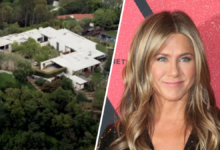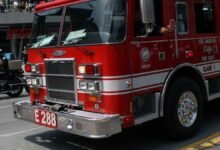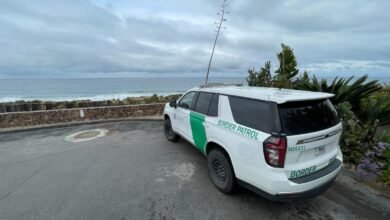
[ad_1]

It was a dangerous proposition. Yet, some residents of Malibu and the Pacific Palisades had well established plans to stay at their homes and fight the Jan. 7 wildfire as it overtook communities.
Survivors who stayed to ride out the inferno, which led to at least a dozen fatalities, acknowledged that their decision came with enormous risk. The fire broke out in a fierce Santa Ana windstorm and grew to become the third-most destructive wildfire on record in California.
“You don’t want to stay unless you are prepared. It is very dangerous to stay,” Janet Fulk-Mongee of the Big Rock neighborhood explained.
Here’s what three families say went into their wildfire preparedness plans ahead of the Palisades Fire.
Prioritizing wildfire resistance
After Janet and Peter Fulk-Monge lost their home in the 1993 Malibu fire, the couple rebuilt on the same lot. They urged their architect to make ‘fire resistance’ a priority and spared no expense to do so. What’s more, the Fulk-Monges developed a well-thought-out plan over the years.
“We put our scuba tanks in the bottom of the pool. They were all turned on. Ready to go. And, we were ready, if necessary, as a last resort to jump in the pool,” Peter Fulk-Monge told NBC4.
We put our scuba tanks in the bottom of the pool. They were all turned on. Ready to go. And, we were ready, if necessary, as a last resort to jump in the pool.
Peter Fulk-Monge
The couple attended fire safety training sessions regularly. They also periodically tested a pool pump as a backup water source — ready to supply a network of fire hoses that they had ready to go on the night of the fire.
Five miles southeast in the Pacific Palisades, Robert Trinkkeller showed off the high-pressure hose he installed in his Palisades home
“I have a lot of defensible space out here. I have a lot of concrete. I don’t have a lot of vegetation. And I know that the way to save a home in a fire storm is watch out for the flying embers that get into siding on your house,” Trinkkeller explained.
The night did not come without surprises. At one point the back porch awning blew off and flew across to the other side of the street. Embers ignited the siding of the house. Trinkeller pounced and doused the flames with his high-pressure hose.
Trinkeller also had his eye on embers hitting neighboring homes. Video shows him charging into a neighbor’s home with a hose to put out flames overtaking the bedroom. He managed to save some of the adjacent homes. Others perished.
Protecting homes from embers
Thomas Ihde described the way flaming palm fronds showered down on the night of Jan. 7 into the early hours of the morning. The only photo he took was a selfie in the mirror when it was all over.
Ihde’s eyes were bloodshot from the smoke and soot covered his face. It had been a sleepless night for Thomas and his mother, Rosemarie, in the Big Rock community of Malibu.
“The lot on the corner had seven cars on it. Boom. Boom. BOOM,” Rosemarie described the blasts, thundering across the neighborhood in succession. “One after another. Boom, boom and again.”
Thomas Ihde’s father saved the home in the 1993 Malibu fire, but was hospitalized with a terminal condition at the start of 2025. Ihde was in town, and he stepped into his father’s shoes.
“House One on fire. House Two on fire. It’s gonna come down the street and come to us,” Thomas Idhe described the ominous task of the approaching fire front. “Getting water there when the fire was small. It can change the outlook for the neighborhood.”
Idhe showed NBC4 the ember resistant vents the family installed to “harden the home.”
“These are Vulcan vents,” Ihde said, pointing up to the attic.
Cal Fire estimates between 60 and 90 percent of homes burn due to embers and not the front line of the fire.
More takeaways from the Palisades Fire
What are other takeaways? Individual efforts of preparation and collective efforts of maintenance can affect outcomes.
“No. 1, people have to cut the brush and chaparral back and sumac. Create defensible space,” Robert Trinkeller told NBC4
Building materials also matter.
“Stucco. A huge difference. I saw wood burning by stucco and an hour later it was holding up,” Thomas Ihde said.
Peter and Janet Fulk-Monge recounted their first fire safety classes and how they learned to hook up fire hoses to the hydrants and handle the force. What’s more, the pair are fierce advocates for community mobilization, which they say is key.
“You have your brush cleared, the whole neighborhood benefits. Not just you. “ Janet Fulk-Monge said.
[ad_2]
[publish_date








